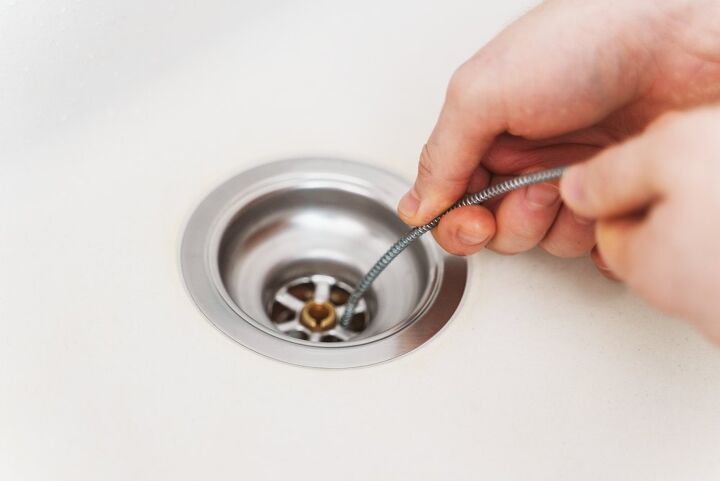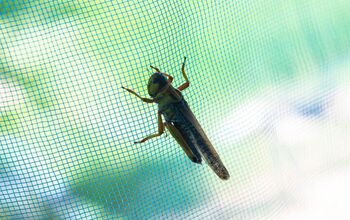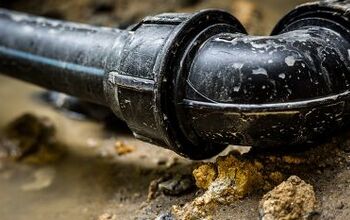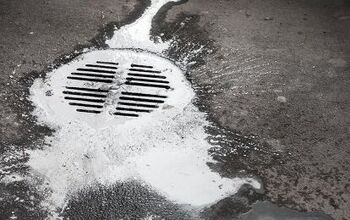Can You Snake An AC Drain Line? (Find Out Now!)

When your A/C drain line becomes clogged, a plumber’s snake may be the most cost-effective option. With the right type of snake, snaking a drain line is a straightforward task.
A clogged A/C drain line can be snaked to clear clogs. A smart snake can navigate the 90° twists of PVC elbows that traditional plumbing snakes couldn’t. When snaking the drain, be careful not to force the clog farther down the line. Go slow and steady, and think of using a camera line if possible.
Snakes find drain lines with PVC traps more difficult to snake than drain lines with smooth curving traps. It is, nevertheless, possible with a little perseverance. We’ll look at how to snake an A/C drain pipe.
Do You Need Drain Cleaning Services?
Get free, zero-commitment quotes from pro contractors near you.

Snaking An A/C Drain Line Is Cost-Effective
Drain lines in air conditioners are prone to clogging for a variety of reasons, including:
- Filters collect dirt
- Minerals build-up
- Mold and mildew issues
Because you breathe in the mold spores developing in your drain line, this produces a mess and a health threat. You may unclog your drain line by passing a drain snake through it to save money on repair fees.
Snaking Your A/C Drain
Here are a few quick steps to snake your A/C drain:
- Open the drain clean-out valve.
- Place the snake here.
- Push it in as far as you can.
- Twist a couple of times to see if you can get through the clog.
- Remove the snake
Before calling a repairman, try a snake. When water or air pressure has failed to break up the clog, a snake is usually utilized.
Drain snakes only function with smooth traps in the traditional sense. These snakes will be unable to negotiate the series of 90-degree turns if the trap is composed of PVC elbows.
What’s The Best Snake To Use?
SmartSnakes are fantastic. The drain snake is composed of flexible stainless steel and has a fishing bob-like ball on the end. The other end is connected to a power drill, which augers out all of the gunk inside the pipe.
PVC elbow traps are no problem for it because of their compact form. It also outperforms the use of air or water pressure.
Vacuuming or pumping compressed air through the pipe may break through the clog, but it will not eliminate the build-up. The same is true for pressured water streams.
The SmartSnake is the perfect size to slip within the line and scrape away any built-up gunk. This will allow you to keep your line open for a longer period of time.
What Are The Symptoms Of A Clogged A/C Line?
Whether you’re wondering how to determine if your air conditioning line is clogged, search for one or more of the following signs:
- The unit abruptly shuts off for no apparent reason.
- Moldy odor or foul odor
- Drain Pan is Overflowing
- Water damage or standing water
Some Other Signs To Watch For
When you see standing water near your unit, it’s a sign that something is wrong with your drain line. Water damage in nearby walls or ceilings might potentially signal a drainage issue.
You may detect a musty, moldy odor coming from the air vents when your unit turns on. This should serve as a warning that sour, stagnant water has no place in your home.
As water backs up lower down the tube, your air conditioner may stop working or shut off for no apparent reason. This is due to a backup of water from the pipe, which flows down the drain pan and into the float switch.
This trips the float switch, which prevents the machine from turning on as a safety feature. If you see any of these symptoms, you should inspect your air conditioning drain line.
What Is The Best Way To Clean An A/C Drain Line?
A clogged drain line does not always necessitate the hiring of a costly plumber. You can typically fix the problem yourself if you are handy with DIY procedures.
- Turn off the unit’s power.
- Locate the cleaning port and open it. You can physically eliminate the barrier if you can see it. If you can’t see it, fill the pipe with warm soapy water or vinegar water until it’s full. The clog may be too big for this procedure if it doesn’t drain out.
- Blow the line. A pressurized water hose or a wet/dry vacuum can be used to blow the line.
- Make sure you don’t flush water back into the device. Flush away from the unit because the clog will always be in that direction.
- Add the vinegar. Once the pipe is clear, pour pure vinegar through it to eliminate any mold spores that may be there. Vinegar should not be diluted because it only kills 82 percent of mold and mildew species.
Bleach should not be used since the vapor from the air vents can cause major respiratory problems. Normally, two cups of vinegar each year will suffice to keep your drain line in good working order.
Stop A Clog Before It Starts
A little care for your air conditioning setup now might save you a lot of trouble later. It’s critical to maintain your device regularly if you want it to work at its best.
Make Sure Gravity Is On Your Side
The drain line coming out of your unit should be inclined toward the ground at a modest inclination. This permits the condensate to be pulled out of the trap and down to the exit by gravity.
The old water will sit there until new condensation forces it out if your line is level. This is the ideal situation for:
- Bacteria
- Mold
- Mildew
Slanting the line at even a 5-degree angle will aid in draining the water. With less water in the line, silt is less likely to adhere to the pipe’s walls.
Make Your Unit Last Longer
Less sediment equals less danger of clogging in the line, which means your unit will last longer. Naturally, this does not guarantee that you will never have a blockage, but it can help to lessen the frequency.
Give Yourself A Peephole
Most technicians will replace a segment of pipe with a clear rubber tube to see if the water is draining properly.
Mold and mildew grow inside these tubes over time, making it impossible to see through them. It’s time to change your tube part when you can’t see through it anymore. It’s critical to maintain this “window” clear so you can see if the water is draining slowly or not at all.
You should check the flow of water through this tube regularly to see whether a problem is developing without having to wait until the water is standing everywhere.
Keep Your Filters Clean
One of the reasons drain lines clog is that air filters aren’t changed as frequently as they should be. In your drain line, dust combines with condensation to generate mud.
Changing your filters regularly is a simple solution to this problem. It is recommended that you change the filters on some machines once a month. Others may require less regular replacement.
Read your owner’s manual’s routine maintenance suggestions and keep a regular schedule for checking on your unit’s health.
It’s sometimes simpler to stay on top of yearly duties like this by scheduling them on a special day, such as your birthday, so you don’t forget.
Tablets Can Break Down Problematic Fungi
A drain pan tablet is a useful tool for keeping drain lines free. In most cases, each bottle contains 200 tablets. After you’ve changed your filters, simply place one in your drain pan. It’s made to break down algae and muck before they may jam up your drain pipe.
Keep the bottle tightly closed to prevent the remaining tablets from being ruined by moisture from the air.
Warning: They lose some of their strength after a year, so you may need to use many at once to achieve the same level of decomposition.
When To Replace Your Drain Line
The entire drain line, or parts of it, may need to be replaced in extreme circumstances. If done by a professional, this can be quite costly.
On the other hand, if you don’t know what you’re doing, doing it yourself could end up costing you more. However, if you’re handy with tools, replacing your drain line isn’t difficult.
It will most likely work better if you remove the old drain line while it is still in place and use it as a template for the new line.
Remember to provide clean-out access to make routine maintenance more convenient. You can also use a clear rubber trap to detect whether problems are developing before they become a complete blockage. Before performing any type of maintenance or repair, make sure the unit is turned off.
Clogged Lines Can Ruin Your House
A clogged A/C drain line can be significantly more harmful to the health of your home than you might believe. The water has to go somewhere as the jammed tube backs up.
That “place” is frequently a hole in a wall or a roof. This can result in:
- Discoloration
- Ruined walls and floors
- Rotten wood
- Mold
- Mildew
- Leaks
The secret to avoiding these homeowner horrors is to keep your drain pipes open. Once a year, running a plumbing snake down an A/C drain pipe can help to reduce the likelihood of a blockage.

Heather is a passionate writer who loves anything DIY. Growing up, she learned everything from home repairs to design, and wants to share her tips with you. When she's not writing, she's usually hiking or searching for her next DIY project.
More by Heather Robbins



























